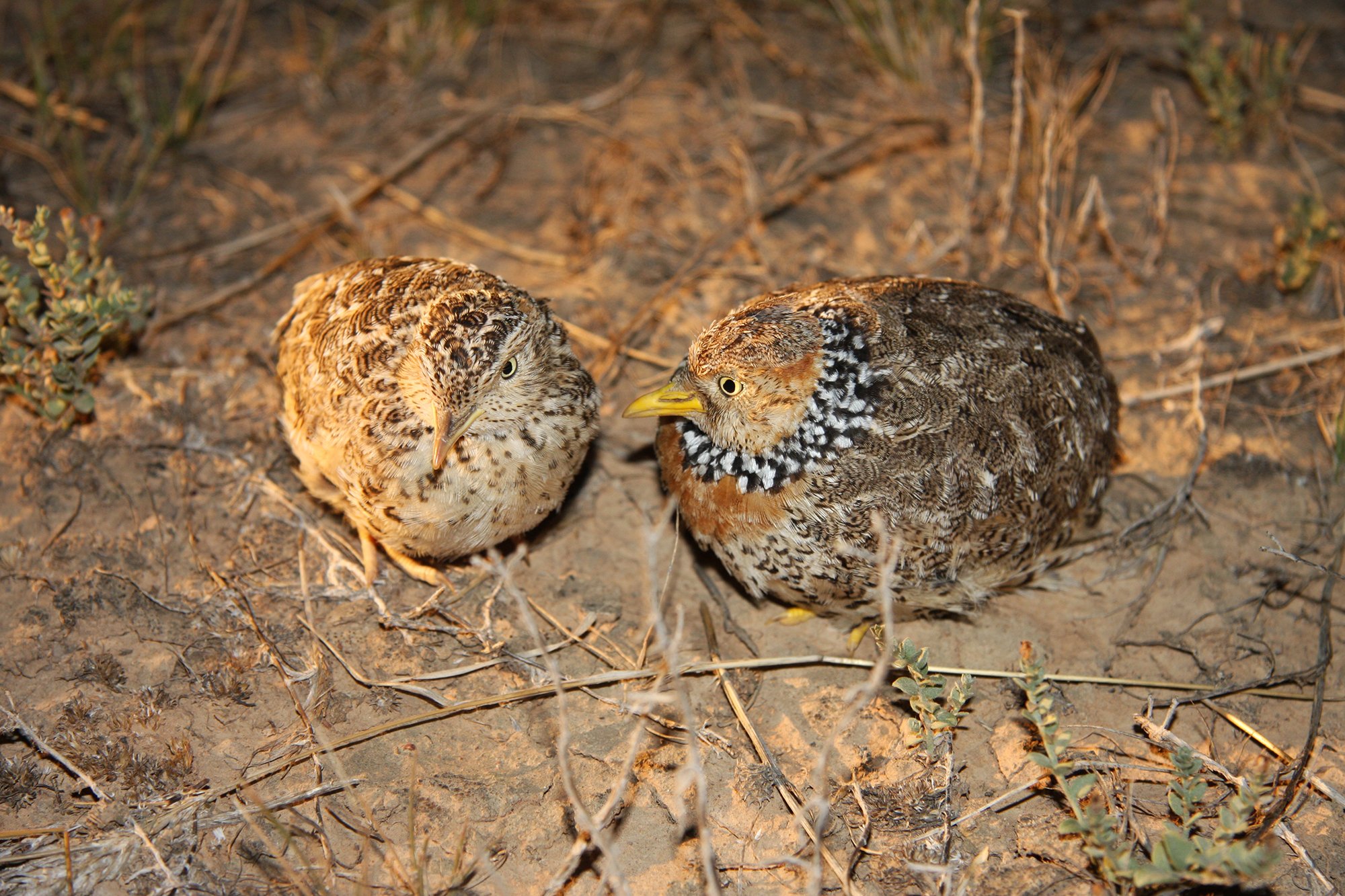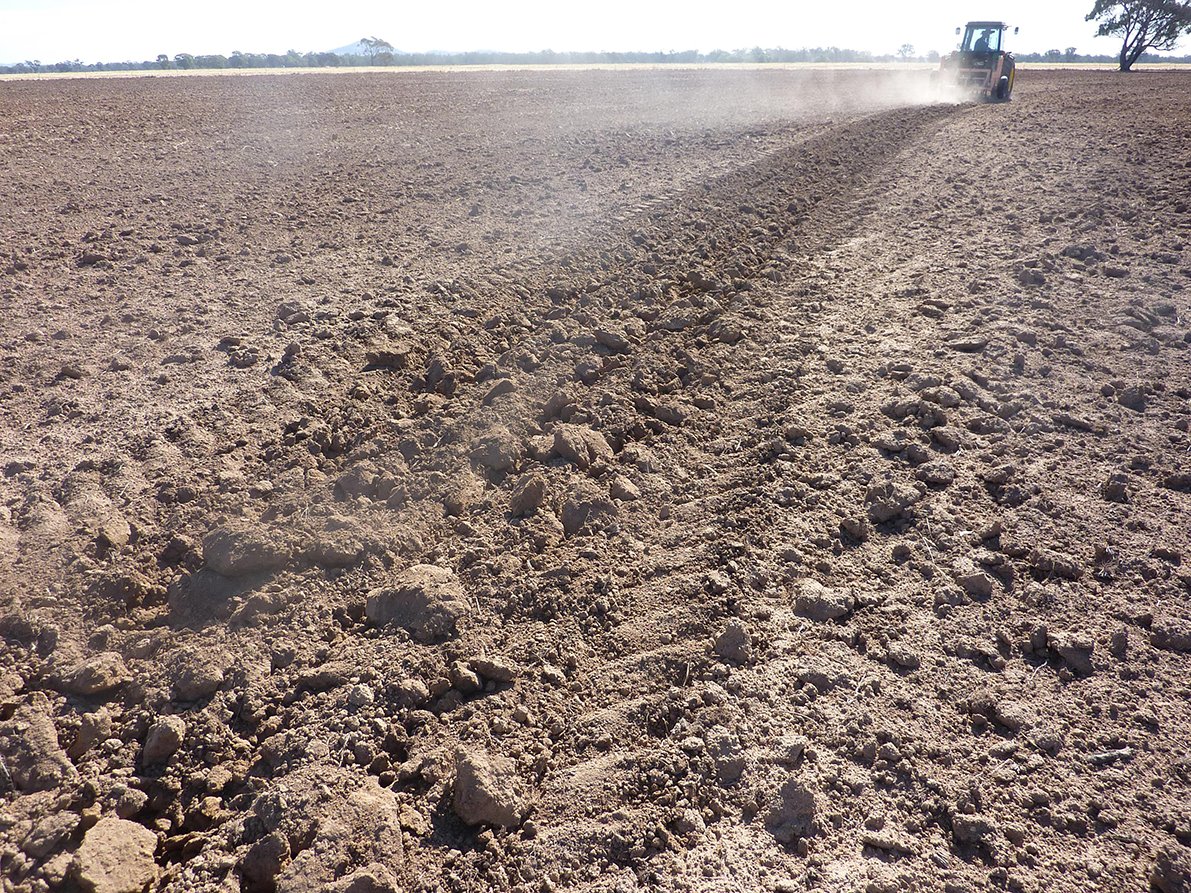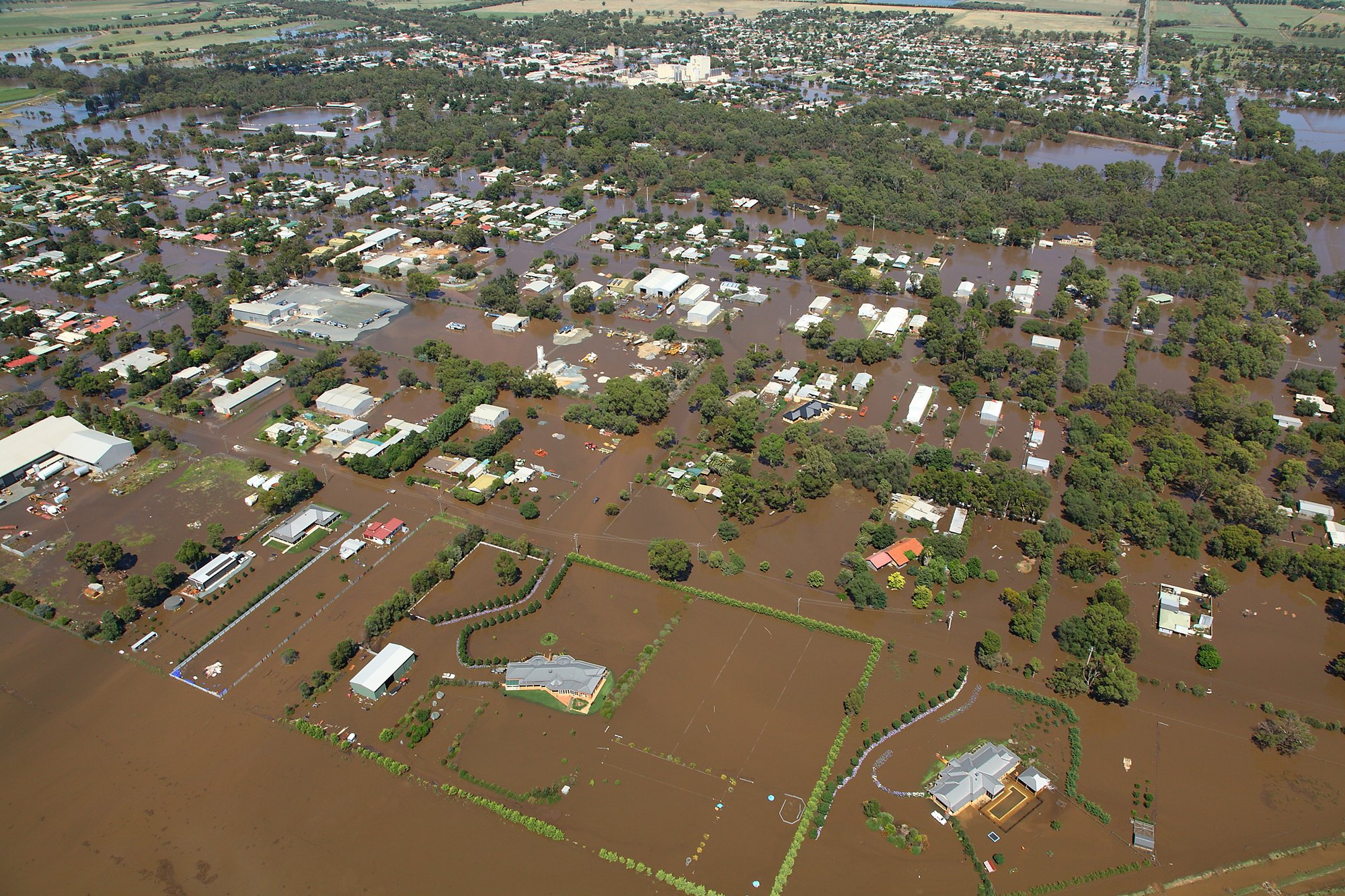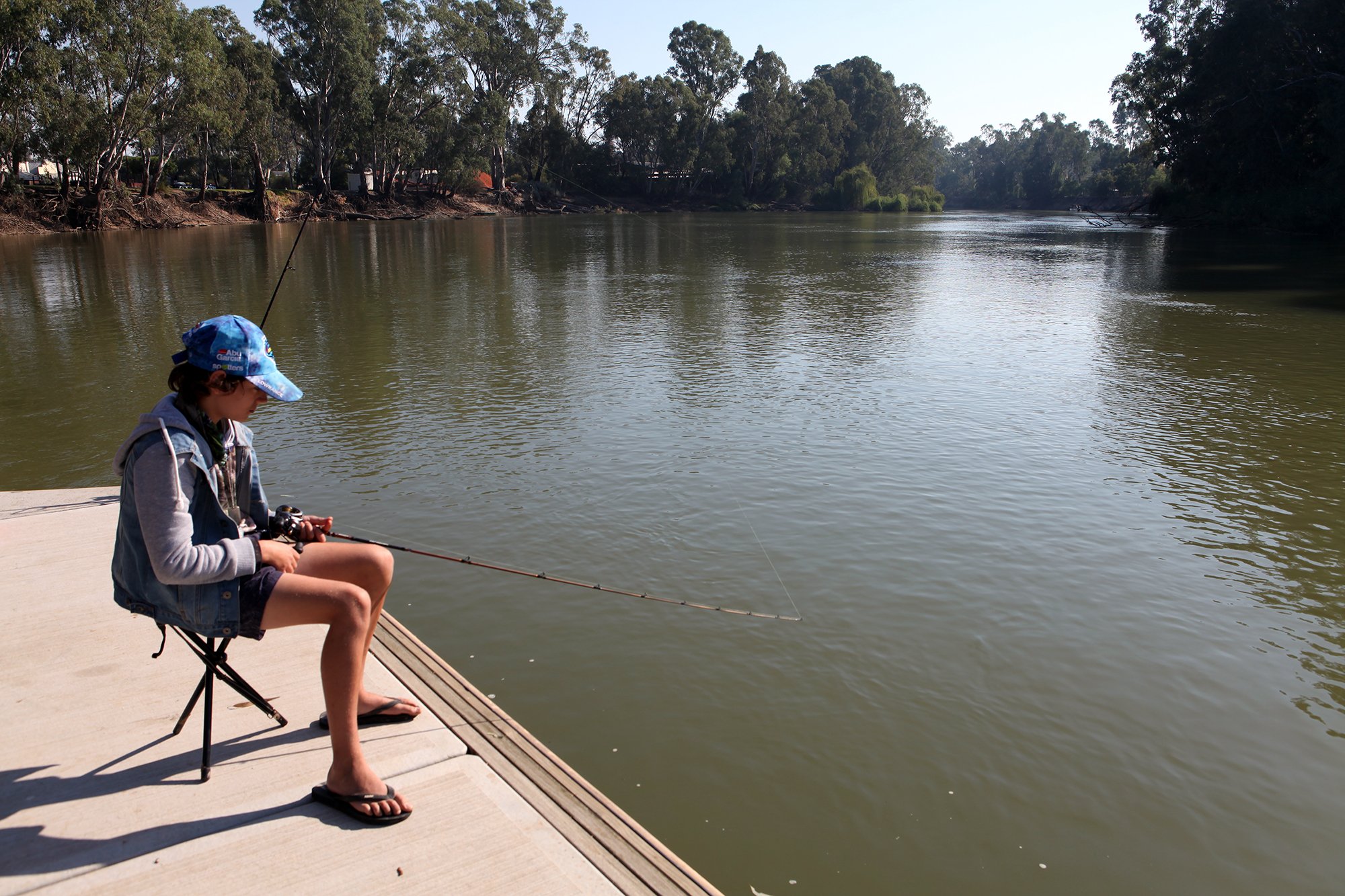


Climate change impacts almost everything we do, and we are leading the way with on-ground action.
Dealing with the impacts of climate change and helping our communities adapt is core business for us.
Our region is climate-aware and already adapting to change and working to improve resilience, but more action is required.

Our focus on climate change within all our projects means we are taking long-term action to ensure our environment, economy, and society is sustainable.
We are undertaking immediate actions to build resilience in our communities and our natural resources, to protect what's important to us all.
Small changes in rainfall can have big impacts in our region. A 10 per cent reduction in runoff can mean a 30 per cent reduction in stream flow for some waterways.
Since the Millennium Drought, the largest reduction in stream flows in Victoria have been in the west of our catchment.
Climate change means our creeks and rivers are getting less overall water.

Less runoff means falling water levels, higher water temperatures, lower oxygen levels, more fish deaths, and more algal blooms.
A rapidly changing climate means the plants and habitats these animals need to survive are also struggling.
Through our Rivers Wetlands projects and flows, we’re increasing fish numbers by building fishways so fish can move up and down stream without barriers.
We’re fencing rivers and creeks to protect them from livestock grazing and trampling, which means native plants can establish.
We’re removing pest willows to allow native aquatic plants to thrive and provide habitat for fish, frogs, platypus, rakali and water bugs.
We’re delivering the right amount of water at the right time to internationally and regionally important wetlands in our region to help them stay productive during a changing climate.
We’re managing flows to wetlands, rivers, and floodplains to restore habitats and ensure there is enough food for waterbirds to survive.
We're educating the next generations in what to look out for and involving volunteers across the region to monitor water health.
Hotter temperatures and less available water have changed our forests and increased pathogens, disease, and pests
To try to survive, vulnerable animal species may move, if they can. But there are limited opportunities for them to do that.
Vegetation needs longer to adapt, which is why connectivity corridors are important.

Some visiting migratory birds in south-eastern Australia are arriving sooner, because of local temperatures.
We are part of a climate, not separate from it. If nature is sick, so are we, and so are our communities, our farms, our livestock, and our businesses. Lungs and leaves go together.
Warmer and drier conditions benefit pests and weeds over our native species. That means some plants not considered weeds today could soon become bigger problems.
We're working to restore the habitat of animals such as the Australasian bittern and growling grass frog.
On the northern plains, we're working with Trust for Nature, Parks Victoria, and local landholders to preserve the habitat of the critically endangered Plains-wanderer bird.
Willow infestations are being removed from waterways to improve natural habitat for platypus, rakali, and native fish, and reduce flood risks to communities and farmers.
Our Healthy Coliban Catchment project is revegetating and fencing off stream banks, removing weeds, and building off-stream watering systems for landholders along waterways throughout the Coliban River catchment.
Climate change will compound the existing pressures farmers face, such as drought, floods, fire, invasive species, and poor historical practices.
Between more intense and regular droughts and floods, farmers across our region are dealing with challenges like never before.
They increase the challenges farming communities face in their efforts to achieve sustainable agriculture.

We’re working with farmers to help them better manage what is happening now and what will happen in the future.
We’re working with landholders and industry groups to create resources, strategies, and action plans to give farmers vital the information to help they businesses survive and thrive in a variable climate.
Sustainable farming, irrigation, and drainage practices are a key plank in the success of local communities and economies.
We’re helping farmers deliver on-ground projects and activities that improve soil health and ecosystem services.
We manage Landcare groups to help them thrive and help build resilience in our land and our communities.
Our work helps landholders pass on healthier land and a healthier environment to future generations.
Native species killed or stressed by climate change will all too often be replaced by weeds and feral animals or infected by exotic diseases.
Floods, storms, fires, and droughts impacting our region today can speed up the pest-species invasion.
Moderate shifts in climate enables invasive species to expand their range. In our region, that can include new and emerging high-threat weeds, foxes, rabbits, and carp.

Carp are prevalent across the Basin and our region, and foxes and rabbits are a constant threat to our native species and farm production.
Weeds such as gorse, pale yellow water lily, and willows choke local waterways and can increase flood risk in some areas.
We work with local landholders to limit the impacts of rabbits and foxes on private property and in native forests.
We run baiting programs that protect native species such as marsupials and turtles across the catchment.
Improving the conditions for native fish with environmental flows and fishways, and revegetation and fencing off waterways helps native fish feed and breed, which gives them a fighting chance against introduced fish such as carp and redfin.
We’re protecting our native species by removing weeds such as willows, gorse, and pale-yellow water lily and baiting foxes.
Climate change means more intense rainfall, which means more intense flooding.
With four large rivers in our catchment, and the Murray, our region is susceptible to both riverine and flash flooding from intense storms.
Over the past 30-60 years, rainfall intensity has increased by 10-20 per cent.
We can expect a further 5-15 per cent increase in rainfall intensity by 2050.

As we saw in 2011, 2022, and 2024, flooding can have devastating effects for our homes, our towns, our communities, and our native plants and animals.
We love where we live, which is why we work with communities to ensure they are aware of, and prepared for, their flood risks.
We partner with councils to embed flood risk as a key part of planning decisions.
During a flood, we ensure key information about the flow of a waterway is available to emergency agencies and community.
We’re ensuring the latest climate change data is included in our flood plans and studies.
Extreme heat, floods at the wrong time of the year can impact camping, fishing, and daily recreation activities.
It’s estimated native fish populations have decreased by 90 per cent across the Murray Darling Basin since early European occupation. We need to stop that decline
Summer floods have created toxic blackwater that kills our fish and Murray crays.

We’re working to protect your favourite bushwalking, camping, and fishing spots as our forests and waterways struggle to cope with increased temperatures.
Fishways, water for environment, and riverbank revegetation helps protect our tourism and recreation fishing industries.
Climate change means even more pressure on our local large and small businesses.
Hotter weather and more intense rainfall mean less water and less income for our local agriculture, recreation, and tourism industries.

Increasing native fish populations also increases recreational fishing and ecotourism opportunities. Recreation fishing contributes more than $300 million a year to the wider regional economy.
A healthy environment means a healthy community and a healthy economy.
The work we do helps safeguard our economies and the recreation activities we love.
